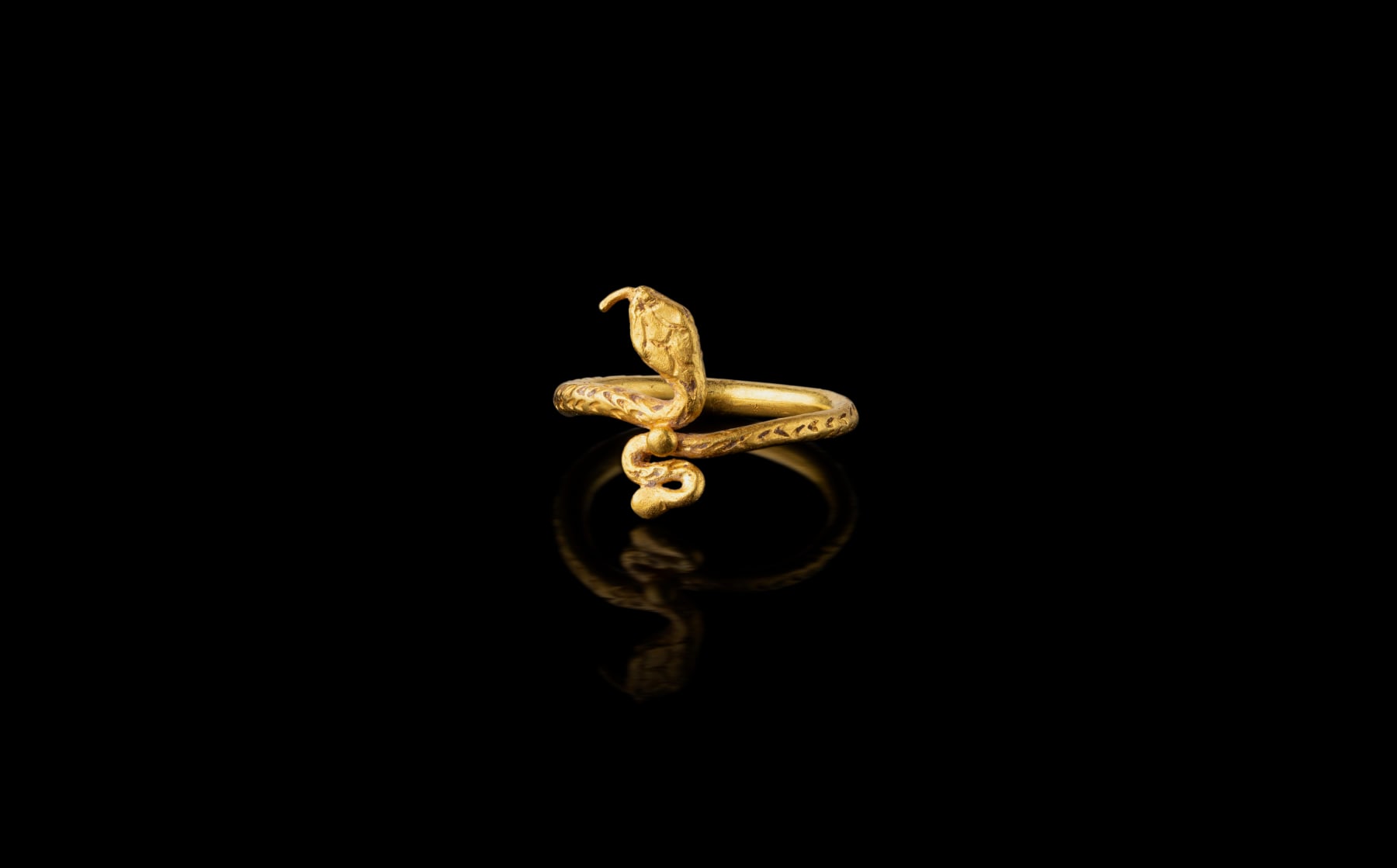Graeco-Roman
A Graeco-Roman gold snake ring, Hellenistic to Roman, circa 1st century BC - 1st century AD
Gold
Weight: 4.4 g; ring size UK: H; height of snake: 1.5 cm
Formed from a stout wire with the body forming the hoop, a scale pattern defined by incised strokes, the neck curving back with the head rearing up and the tongue...
Formed from a stout wire with the body forming the hoop, a scale pattern defined by incised strokes, the neck curving back with the head rearing up and the tongue extended, the tail coiled into two spiral loops, joining the neck with a large gold granule at the centre.
Provenance
With Nicolas Koutoulakis (1910 - 1996), Paris and GenevaPrivate collection, Brussels, acquired from the above circa 1980s
